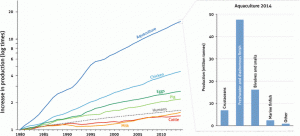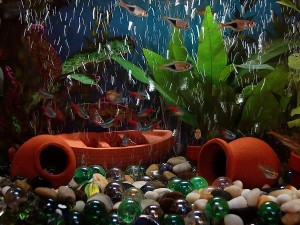This paper may be of interest: Unpacking factors influencing antimicrobial use in global aquaculture. Henriksson, P.J.G., Rico, A., Troell, M. et al. Sustain Sci (2017). https://doi.org/10.1007/s11625-017-0511-8 Abstract: Global seafood provides almost 20% of all animal protein in diets, and aquaculture is, despite weakening trends, the fastest growing food sector worldwide. Recent increases in production have …
Just a quick post here. Studies of the microbiology of built environments that house animals (e.g., aquaria, farms, animal shelters, zoos, etc) are of growing interest for multiple reasons. In that regard this paper might be of interest to some – because it covers some topics that are sometimes neglected in this general area – viral diversity …
For the last few years our lab has been really excited about the idea of having undergraduates culture bacterial isolates and sequence their genomes. Starting with the Undergraduate Built Environment Genomes Project in 2011, we went on to re-write and upgrade the assembly pipeline that we use, followed by the publication of the “Swabs to …
Microbes in the house Seasonal Dynamics of the Airborne Bacterial Community and Selected Viruses in a Children’s Daycare Center – Aaron J. Prussin II – PLOS ONE (OA) We have investigated the microbial community of the air in a daycare center, including seasonal dynamics in the bacterial community and the presence of specific viral pathogens. …
We’ve talked here in the past about the idea of probiotics for buildings (which is many years in the future, if ever) and pretty much everyone has heard about probiotics for human health (currently an issue of much debate). One of the problems with both buildings and people is the difficulty of testing a hypothesis …

